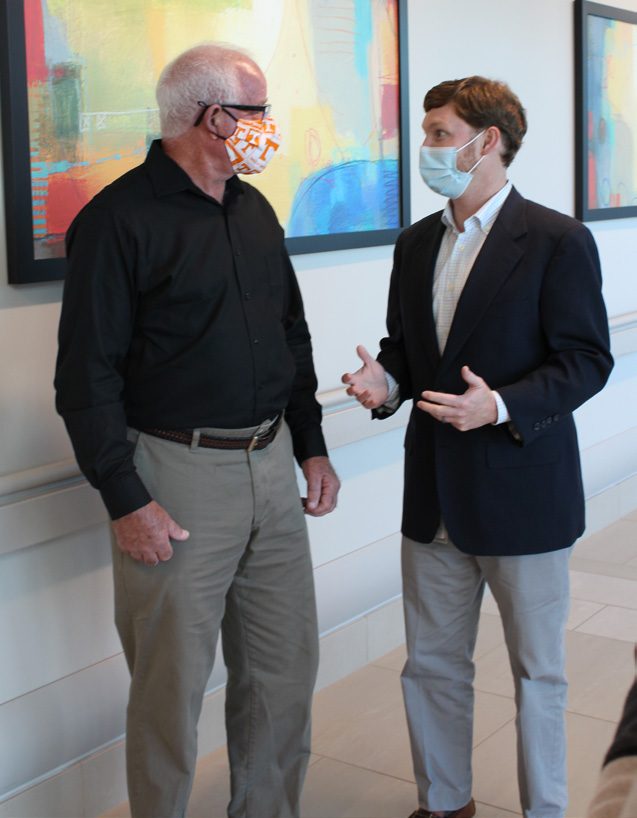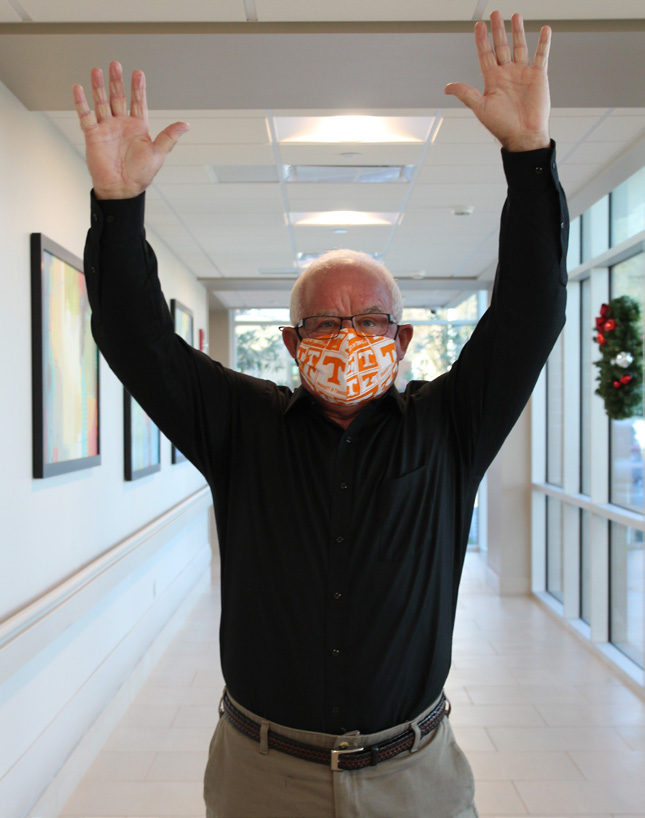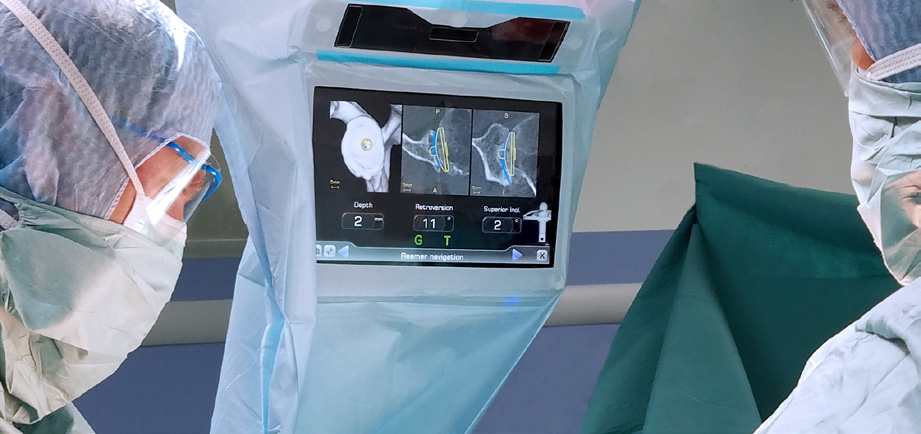- Find a DoctorDoctors by Specialty
- Cardiac Electrophysiology
- Cardiology
- Colon & Rectal Surgery
- Family Medicine
- Gastroenterology
- General & Vascular Surgery
- Gynecological Oncology
- Gynecology
- Infectious Disease
- Internal Medicine
- Interventional Cardiology
- Interventional Radiology
- Nephrology
- Neurology
- Neurosurgery
- Obstetrics & Gynecology
- Oncology
- Oncology & Hematology
- Orthopedic Surgery
- Otolaryngology
- Perinatology
- Psychiatry
- Pulmonary Medicine
- Radiation Oncology
- Rheumatology
- Sleep Medicine
- Thoracic Surgery
- Urology
- View All Doctors
- Our ServicesMedical Services
- Bariatric Services
- Behavioral & Mental Health
- Breast Care
- Cancer Care
- Critical Care
- Ear, Nose, & Throat
- Emergency Services
- Gastroenterology
- Glossary
- Heart Care
- Home Care
- Hospice & Palliative Care
- Imaging & Diagnostics
- Long-Term Care
- Nephrology
- Orthopedics
- Primary Care
- Rehabilitation Therapies
- Robotic-Assisted Surgery
- Sleep Services
- Spine Care
- Stroke Care
- Surgery Services
- Telehealth Services
- Urology
- Urgent Care
- Virtual Urgent Care
- Women’s Services
- Wound Care
- Our Locations
- Patients & Visitors
- About Us
Parkwest Patient is Region’s First to Benefit from New “GPS” Technology
It’s the perfect pairing of technology and human intellect. Using precise measurements, surgeon Justin Kennon, MD, navigates a reverse total shoulder replacement using GPS technology. In this case, GPS stands for guided personalized surgery. Parkwest Medical Center and Dr. Kennon are the first hospital in East Tennessee to offer this new and advanced computer system that precisely guides surgeons during procedures.

“It’s all the benefit of preoperative planning and computer-assisted surgery technology
combined with my intraoperative decision making,” Dr. Kennon explains. “The combination of robotic-like technology with shoulder fellowship experience is an absolute game changer for patient outcomes.” With a CT-scanned, 3D model of the patient’s shoulder, Dr. Kennon can plan the perfect procedure ahead of time and before the first incision. “I’m able to visualize the patient’s shoulder blade and ball and socket joint,” Dr. Kennon says. “I am able to plan the implant size and position, both before surgery and using interactive feedback during surgery. This advancement allows me to better understand the implant and shoulder dynamics before we ever get to surgery.”
The Best Route
Dr. Kennon compares this technology to using a car’s GPS to get to a new destination. “You can go down back roads and get lost a few times and eventually find your way there, but it’s much easier and more precise to put the location into the GPS,” Dr. Kennon says. “You get there precisely, efficiently and effectively. Better outcomes mean that everybody’s happier in the end.”
Going into surgery, Dr. Kennon has a preoperative plan that is specific and customized to each
patient. As the surgery is being performed, he has the guidance he needs to make sure he is following the patient’s personalized plan down to the finest details. “Every time I move my hand one way or the other – a little left, a little right, a little up, a little down – it tells me in real time whether or not I am exactly where I thought I was and whether or not I’m executing that plan perfectly,” Dr. Kennon says.
Extensive shoulder and elbow fellowship training at the Mayo Clinic fueled Dr. Kennon’s passion for using technology to achieve better results for patients. He wanted to bring the benefits of that technology home to East Tennessee. “This has been exciting for me because I pride myself in providing excellent patient care as a doctor, as well as providing top- notch patient outcomes,” Dr. Kennon says. “Any tool or technology that allows me to get closer to that perfect outcome is exciting for me.”
Shouldering a Burden
The first patient to undergo a shoulder replacement with the new technology was Ray Russell, 71, of Dandridge. He says he knew that a shoulder replacement was the only way to ease his pain and restore his mobility. “I’m an ol’ country boy and I’ve worked since I was 8 years old,” Russell says. “My uncles were all construction people. I worked for them every summer and even during breaks from school, pulling wires, doing electrical work, framing houses, carrying concrete block, carrying shingles or putting shingles on a roof.” He had undergone rotator cuff surgery on both shoulders, which helped.

having GPS-guided shoulder replacement surgery.
However, this would not solve his problems forever, and eventually the piercing pain began to creep back in. “My right shoulder started hurting and I couldn’t lift it up anymore,” Russell says. “I couldn’t reach anything … something as simple as a coffee cup, medicine, or plates for my wife …” After shoulder replacement with GPS guidance, he is no longer held back by the pain. “I can reach things in the cabinet, I can reach the towels – things like that I couldn’t do before,” Russell says. “I’ve been raking leaves and mowing the yard with a riding lawn mower. That type of thing used to be hard to do because of the pain in my shoulder.” He can even lift his arms to celebrate a Tennessee touchdown during football season this year. Dr. Kennon says seeing quality of life restored in patients like Russell makes the investment in new technology completely worthwhile.
“We’re really breaking ground,” Dr. Kennon says. “As a surgeon, it’s outstanding to lead the
way to better outcomes here in East Tennessee, but more importantly, I feel we owe it to our
patients to provide the best care and treatment possible.”
Leading the Way

Parkwest Medical Center is the first hospital in East Tennessee to implement the guided personalized surgery (GPS) system for shoulder surgery. This advanced surgical platform combines the surgeon’s expertise with a computer system that helps the surgeon visualize a clear path during surgery. Minimally invasive techniques and implant alignment are personalized to the patient’s unique anatomy. Surgeons get real-time visual guidance in total shoulder surgery with advanced accuracy and precision.
More About Shoulder Surgery
What Happens During Shoulder Replacement Surgery?
Sometimes a healthy shoulder can become damaged by disease such as arthritis, or injury.
This can result in severe pain, pseudoparalysis (false paralysis) and muscle weakness. Shoulder
replacement surgery replaces the damaged part of your shoulder to recreate the natural contours of the bones in a healthy shoulder. More than half a million shoulder replacement procedures are performed every year in the United States.
Primary Shoulder Replacement
Shoulder replacement surgery involves removing the damaged part of the shoulder and using prosthetics or implants to mimic a healthy shoulder. Sometimes only the ball is replaced
(hemiarthroplasty), while other times, both the ball and socket are replaced (total shoulder arthroplasty). The ball is metal and the socket is plastic.
Reverse Shoulder Replacement
When the rotator cuff tears, the muscles lose their ability to keep the humerus (the bone between the shoulder and the elbow) centered on the glenoid (the end of the scapula or shoulder blade), causing the humerus to move up- ward and out of the socket. This instability, combined with arthritis or a previous shoulder injury, can cause severe pain and loss of function. If you have an irreparable rotator cuff tear and arthritis, your surgeon may opt to perform a reverse shoulder replacement. The rotator cuff is a group of muscles and tendons that surround the shoulder in order to keep the humerus centered while performing shoulder-related tasks such as lifting the arm.
In this procedure, the anatomy of the shoulder is reversed by attaching a metal ball
(glenosphere) to the glenoid and the plastic socket (humeral liner) to the upper humerus. A reverse shoulder replacement empowers the deltoid to become the main functioning muscle in the absence of a healthy rotator cuff.
Personalized Surgery for You
The new technology uses a tracker placed on the patient’s bone. The tracker sends data regarding the patient’s anatomical structure and joint movement to a computer screen. The computer analyzes the information it has gathered and displays it on the screen in a graphical for- mat with calculated key measurements. The images on the screen allow the surgeon to verify where to remove bone and appropriately
place the implant.
To learn more about shoulder surgery and other services at Parkwest Medical Center, visit TreatedWell.com or call (865) 374-PARK.
























